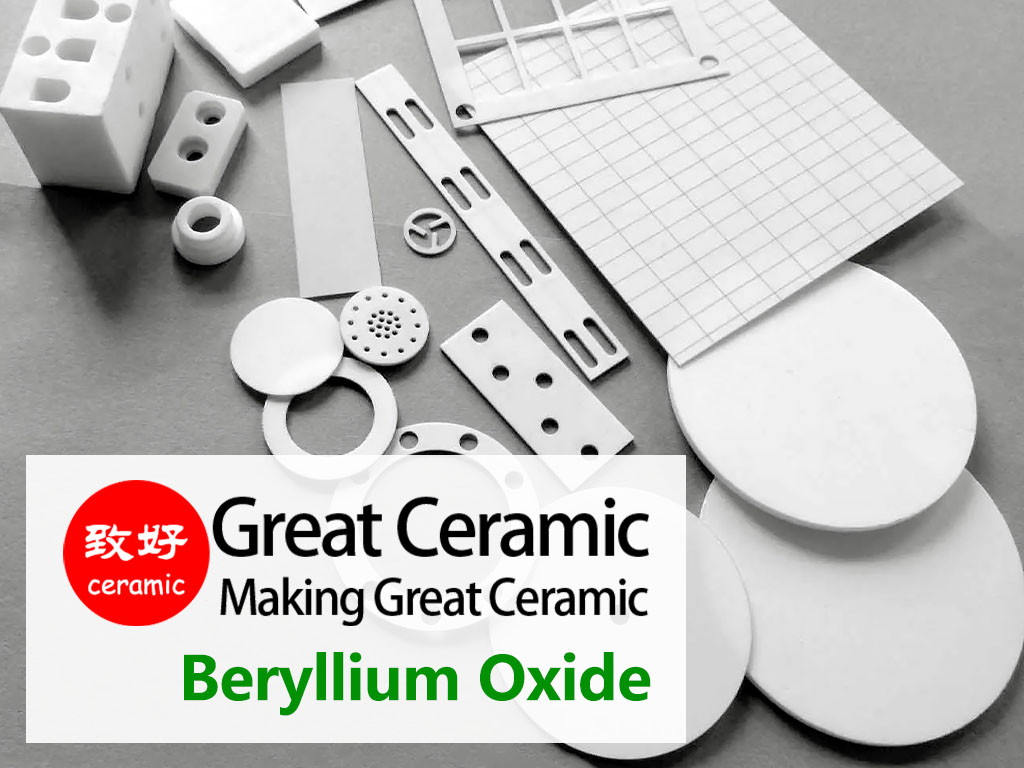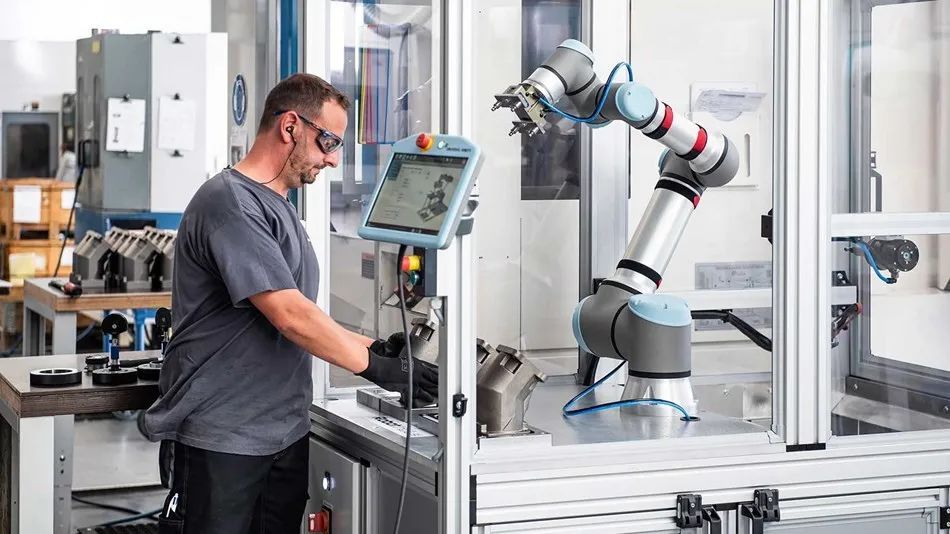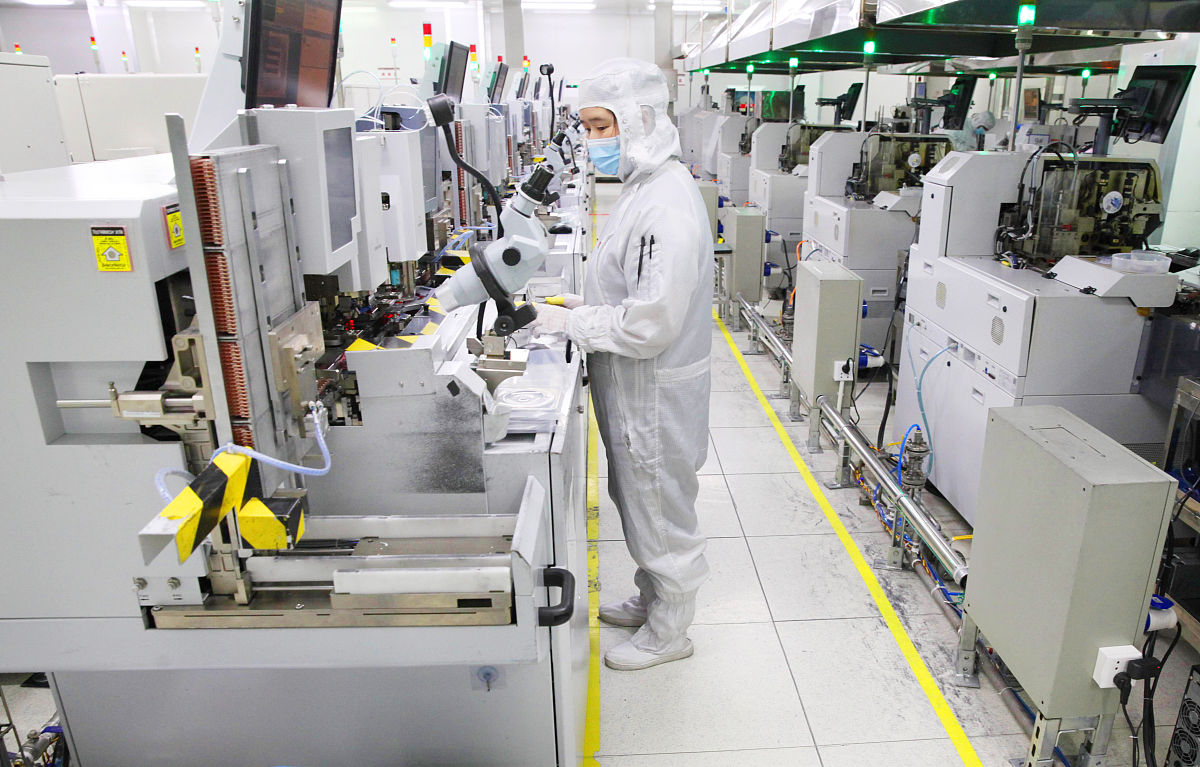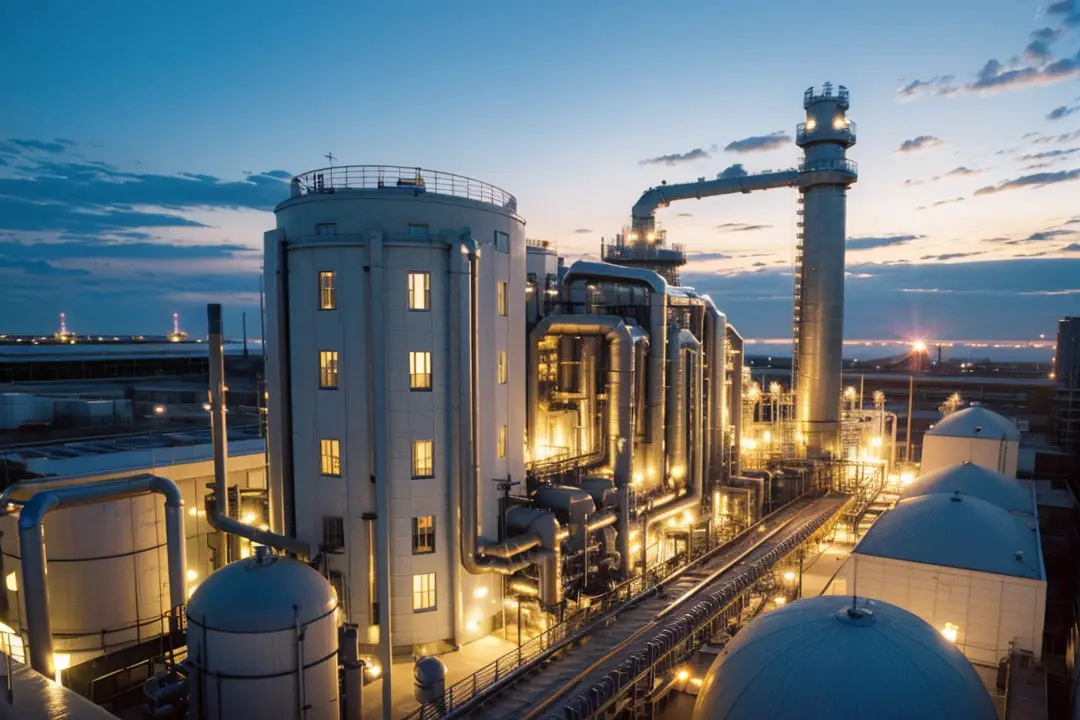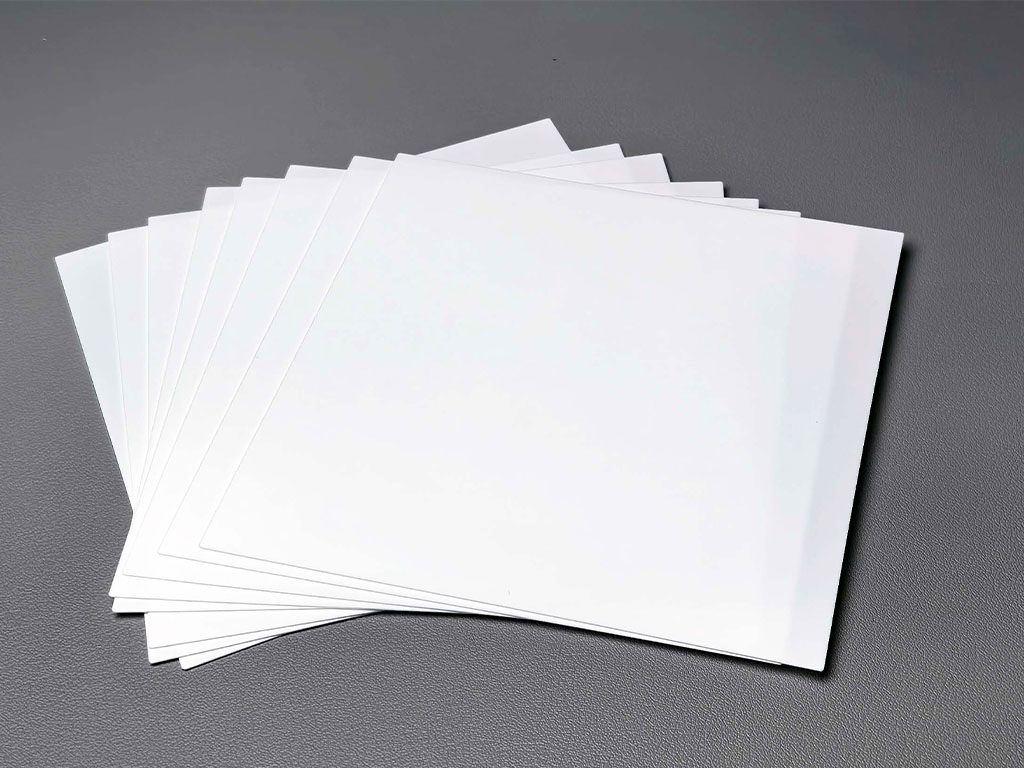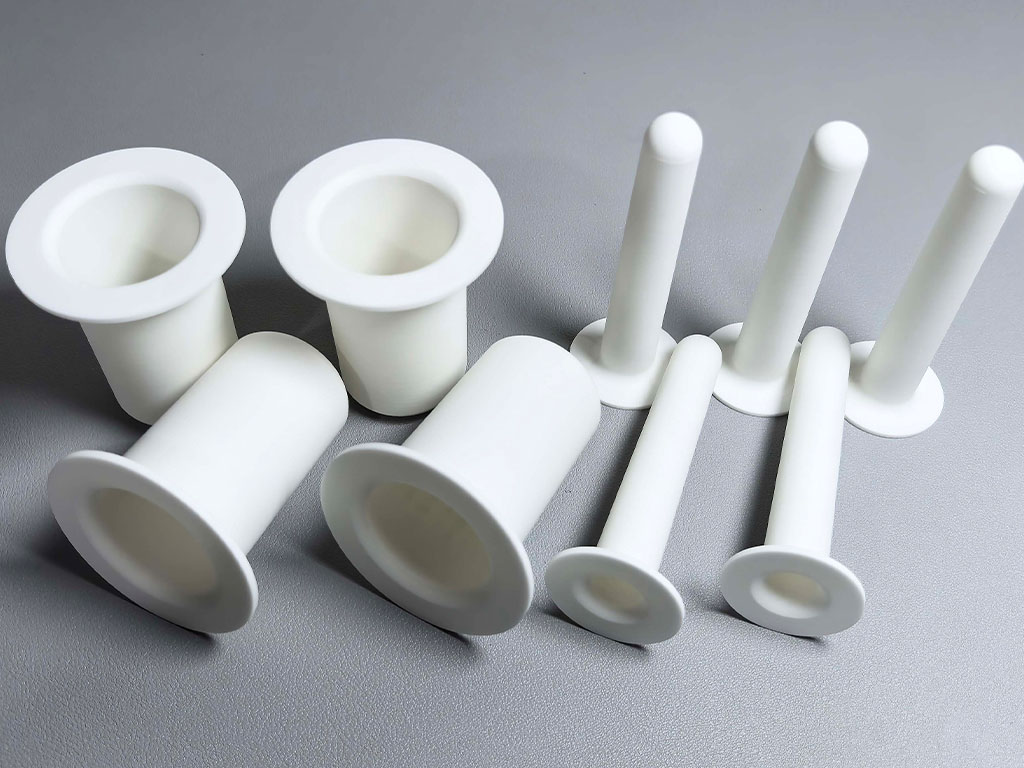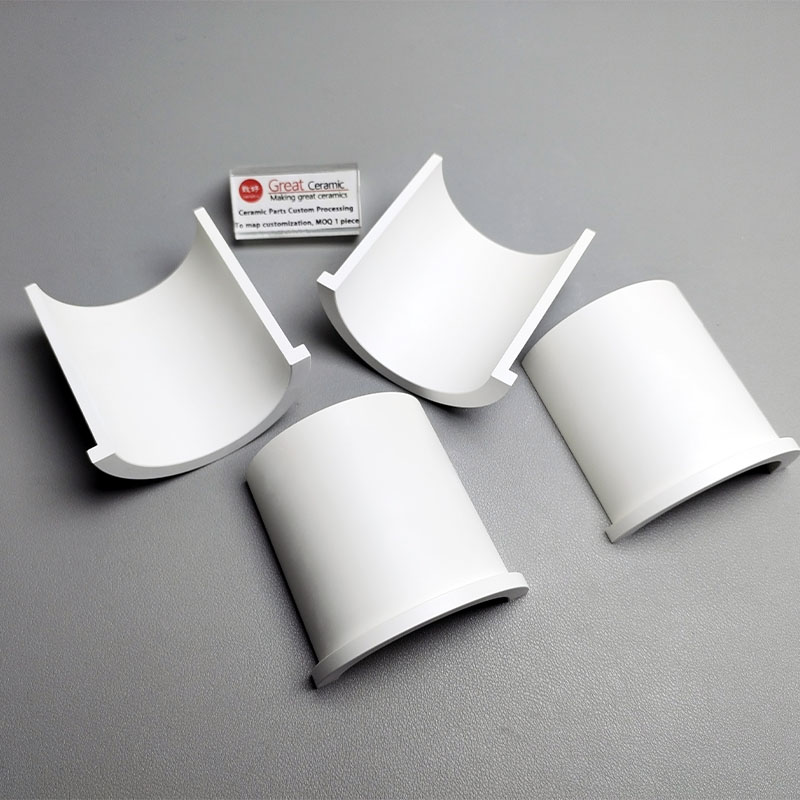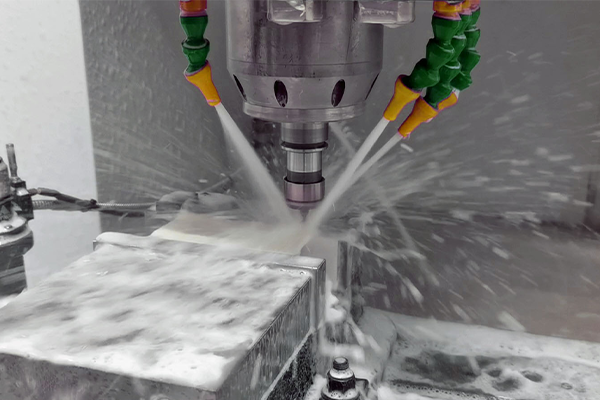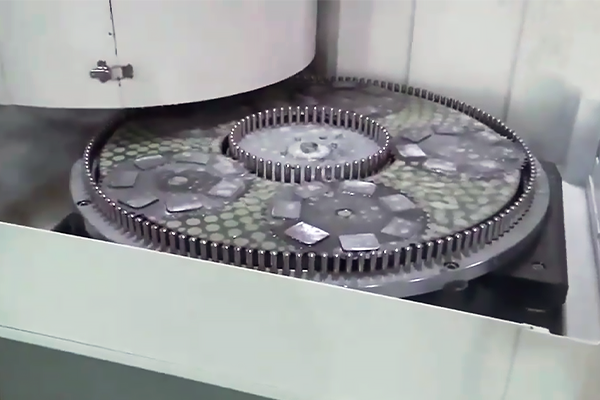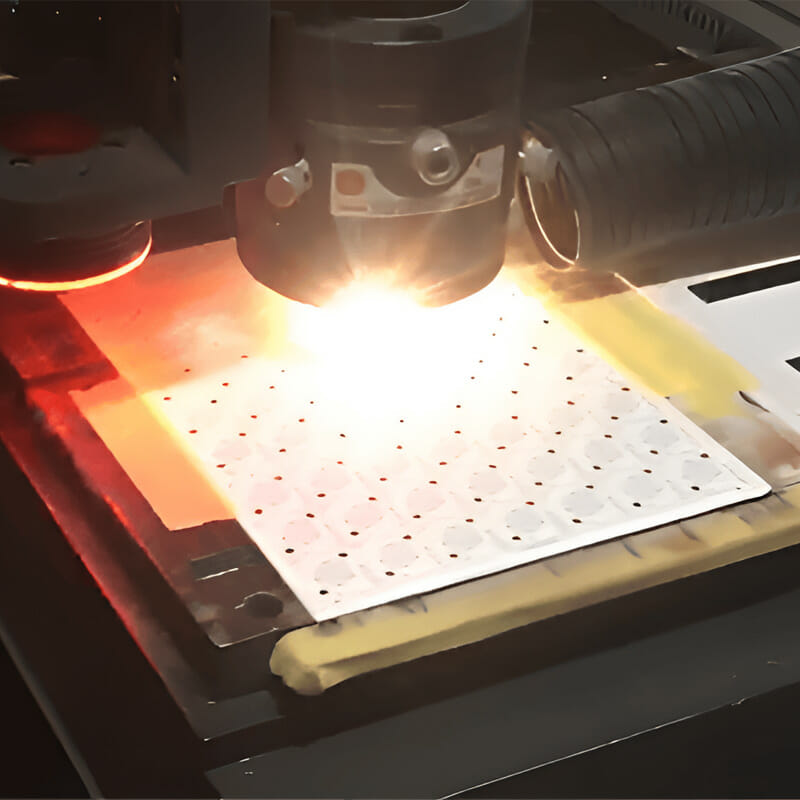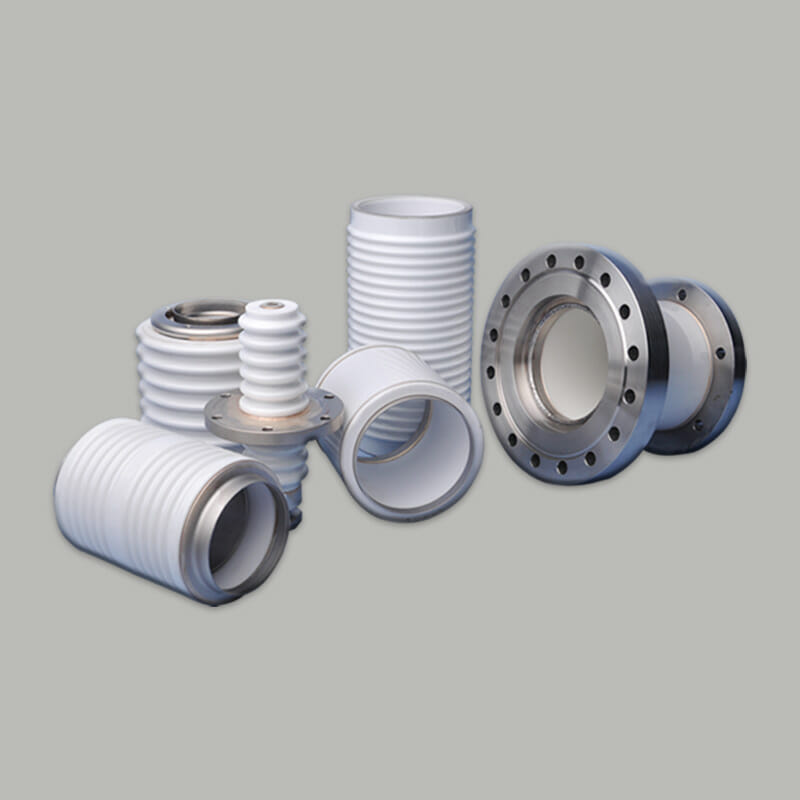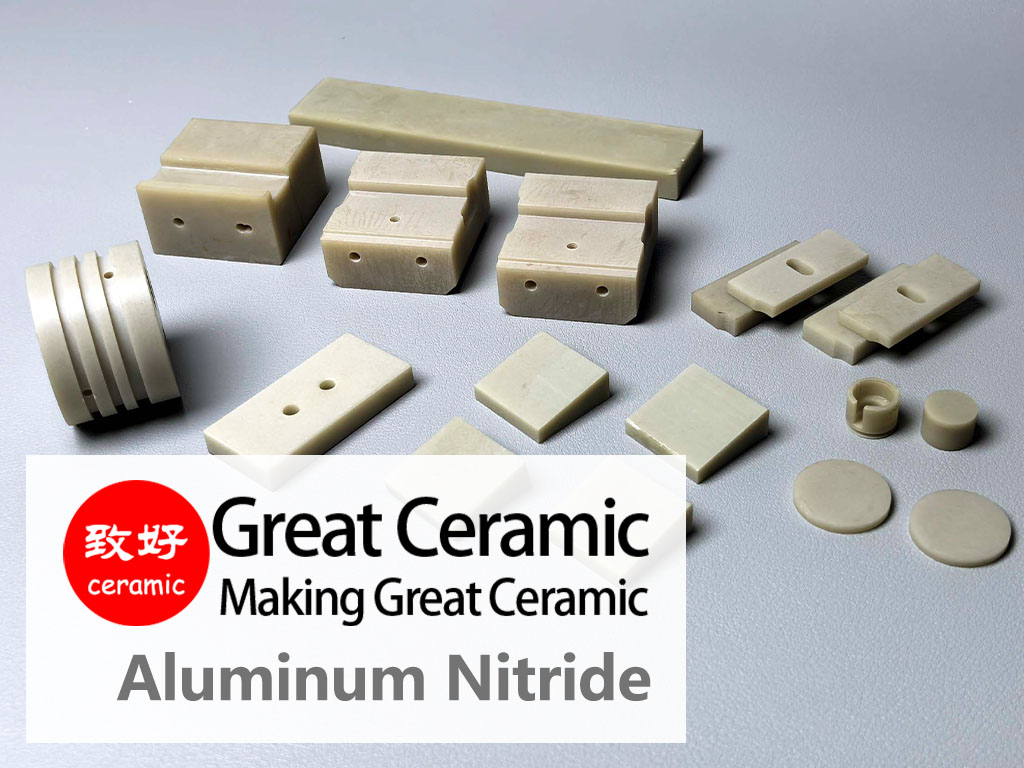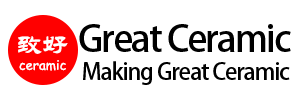Beryllium Oxide (BeO)
Beryllium oxide, often referred to as BeO beryllium oxide, is a highly specialized ceramic material known for its exceptional thermal conductivity, high electrical resistivity, and outstanding mechanical strength. The beryllium oxide chemical formula is BeO, also commonly expressed as the formula for beryllium oxide, formula of beryllium oxide, or chemical formula for beryllium oxide. As a high-performance ceramic, BeO stands out among advanced materials due to its unique ability to combine electrical insulation with thermal conductivity that rivals metals such as aluminum. This dual nature makes beryllium oxide an irreplaceable material for applications requiring both efficient heat dissipation and electrical isolation.
Skip to
Advantages | Applications | Material Grades | Properties | Cases | Machining | FAQs | Related
Advantages of Beryllium Oxide
BeO beryllium oxide ceramics possess a range of properties that make them highly sought after in advanced technological fields.
Industry Applications
Beryllium oxide ceramics are widely used in heat dissipation substrates of high-power electronic and radio frequency devices, electrical insulation structures of semiconductor packaging and microwave devices due to their extremely high thermal conductivity and excellent electrical insulation properties. They are used as high-temperature insulators and heat-resistant components in lasers, vacuum tubes and nuclear energy technologies. They are also used to manufacture high-purity crucibles, heat conduction components and special sensors, playing an irreplaceable role in critical scenarios that require efficient heat dissipation while maintaining insulation.
Available grades of Beryllium oxide material
Great Ceramic offers multiple beryllium oxide product grades and formats to suit application demands:
B-97 Grade Beryllium Oxide Ceramics
B-97 Grade Beryllium Oxide Ceramics is a high-performance technical ceramic primarily composed of high-purity BeO (typically around 97%). It combines high thermal conductivity with electrical insulation, while possessing excellent mechanical strength and high-temperature stability. Therefore, it plays a vital role in high-end applications such as electronics, microwaves, and nuclear energy.
Key Performance Characteristics
Typical Applications
Precautions
BeO dust is harmful to the human body. Dust emissions must be strictly controlled and safety precautions must be implemented during processing.
The finished ceramic is safe and stable under normal operating conditions.
B-99 Grade Beryllium Oxide Ceramics
B-99 grade beryllium oxide ceramics are a high-purity (BeO content ≥99%) advanced ceramic material. Compared to B-97 grade, it offers higher chemical purity and superior physical properties, making it particularly suitable for applications requiring extremely high thermal conductivity and electrical insulation. Its performance is at the high end of beryllium oxide ceramics.
Key Performance Characteristics
Typical Applications
Precautions
As with B-97, strict precautions must be taken during processing to avoid inhalation of BeO dust.
The finished ceramic is stable and safe during packaging, assembly, and use.
B-99.5 Grade Beryllium Oxide Ceramics
B-99.5 grade beryllium oxide ceramic is an ultra-high-purity (BeO ≥ 99.5%) specialty ceramic material, one of the purest grades of beryllium oxide ceramics. Compared to B-97 and B-99, it offers superior thermal conductivity, electrical properties, and chemical stability, making it particularly suitable for advanced technologies with demanding thermal management and electrical performance requirements.
Key Performance Characteristics
Typical Applications
Summary
B-99.5 grade beryllium oxide ceramics represent the highest grade of beryllium oxide ceramics, combining extremely high thermal conductivity, excellent electrical insulation, and outstanding high-temperature and radiation stability. Primarily used in aerospace, nuclear energy, high-power electronics, and cutting-edge scientific research, they are among the highest-performing insulating and thermally conductive ceramics.
Beryllium Oxide Attenuation Ceramics
Beryllium oxide attenuation ceramics are a class of functional ceramics developed on the basis of high-purity BeO. Through doping and special processing techniques, their electromagnetic properties are modified so that, while maintaining BeO's excellent thermal conductivity and electrical insulation, they also provide electromagnetic wave attenuation (absorption and dissipation) capability. These ceramics integrate thermal management and electromagnetic energy control, making them vital for microwave, RF, and high-power electronic applications.
Key Properties
Typical Applications
Summary
Beryllium oxide attenuation ceramics combine high thermal conductivity, strong insulation, and electromagnetic attenuation properties, making them indispensable in microwave devices, RF power electronics, EMC systems, and aerospace/defense applications.
Key Properties of beryllium oxide
Great Ceramic offers a variety of beryllium oxide materials for customers to choose from. The following values are typical material properties and may vary depending on product configuration and manufacturing process. For more details, please feel free to contact us.
| Property | B-97 | B-99 | B-99.5 |
|---|---|---|---|
| Dielectric constant (1 MHz) | 6.9 ± 0.4 | 6.6 ± 0.2 | 6.6 ± 0.2 |
| Dielectric constant (~10 GHz) | 6.9 ± 0.4 | 6.9 ± 0.2 | 6.8 ± 0.2 |
| Dielectric loss tan δ (1 MHz) | ≤ 4×10⁻⁴ | ≤ 4×10⁻⁴ | ≤ 4×10⁻⁴ |
| Dielectric loss tan δ (10 GHz) | ≤ 8×10⁻⁴ | ≤ 6×10⁻⁴ | ≤ 4×10⁻⁴ |
| Volume resistivity (25 °C) | ≥ 1×10¹⁴ | ≥ 1×10¹⁴ | ≥ 1×10¹⁴ |
| DC breakdown strength | ≥ 15 kV/mm | ≥ 30 kV/mm | ≥ 40 kV/mm |
| Bending strength | ≥ 170 MPa | ≥ 200 MPa | ≥ 200 MPa |
| Bulk density | ≥ 2.85 g/cm³ | ≥ 2.85 g/cm³ | ≥ 2.88 g/cm³ |
| CTE (25–500 °C) | 7.0–8.5 ×10⁻⁶ | 7.0–8.0 ×10⁻⁶ | 7.0–8.0 ×10⁻⁶ |
| Thermal conductivity (25 °C) | ≥ 200 W/m·K | ≥ 260 W/m·K | ≥ 285 W/m·K |
| Thermal conductivity (100 °C) | ≥ 160 W/m·K | ≥ 190 W/m·K | ≥ 200 W/m·K |
| Thermal shock resistance | No cracks | Pass | Pass |
| Chemical stability in 1:9 HCl | ≤ 0.3 mg/cm² | ≤ 0.1 mg/cm² | ≤ 0.1 mg/cm² |
| Chemical stability in 10% NaOH | ≤ 0.2 mg/cm² | ≤ 0.1 mg/cm² | ≤ 0.1 mg/cm² |
| Leak rate | ≤ 1×10⁻¹⁰ Pa·m³/s | ≤ 5×10⁻¹² Pa·m³/s | ≤ 5×10⁻¹² Pa·m³/s |
| Average grain size | 12–30 μm | 10–20 μm | 10–20 μm |
Key Property Comparison – BeO vs. Other Technical Ceramics
| Property | Beryllia (BeO) | Alumina (Al₂O₃ 99%) | Aluminum Nitride (AlN) | Shapal (AlN-SiC) |
|---|---|---|---|---|
| Thermal Conductivity (W/m·K) | 230 – 260 | 20 – 30 | 170 – 180 | 85 – 90 |
| CTE (x10⁻⁶/K) | 7.0 – 8.5 | 6.5 – 8.0 | 4.5 – 5.5 | 4.5 – 5.5 |
| Dielectric Constant (1 MHz) | 6.7 | 9.8 | 8.6 – 9.0 | 7.0 – 7.5 |
| Dielectric Loss (tan δ x10⁻⁴) | 1 – 5 | 1 – 2 | 1 – 10 | 5 – 15 |
| Flexural Strength (MPa) | 170 – 300 | 300 – 400 | 300 – 400 | 450 – 600 |
| Density (g/cm³) | 2.85 – 3.01 | 3.85 – 3.95 | 3.25 – 3.35 | 3.10 – 3.20 |
beryllium oxide application cases
Beryllium oxide (BeO) ceramics from Great Ceramic combine ultra-high thermal conductivity, excellent electrical insulation, low dielectric constant, and superior stability at high temperatures, making them one of the most advanced ceramic solutions for demanding industries. With a thermal expansion coefficient close to silicon, BeO ceramics are the perfect choice for high-performance electronic packaging and thermal management.
Key Applications of BeO Ceramics:
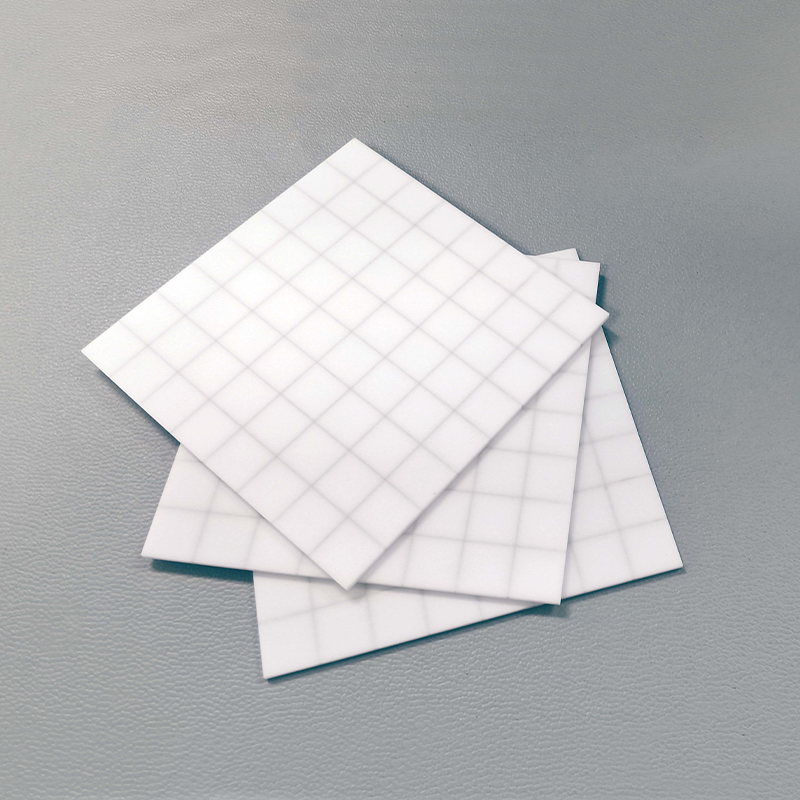

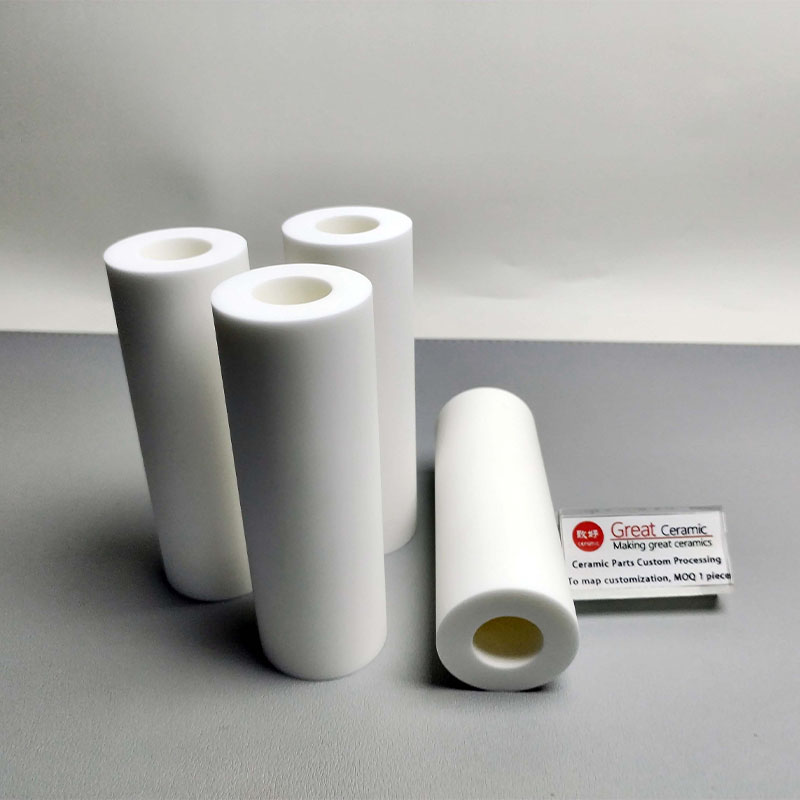
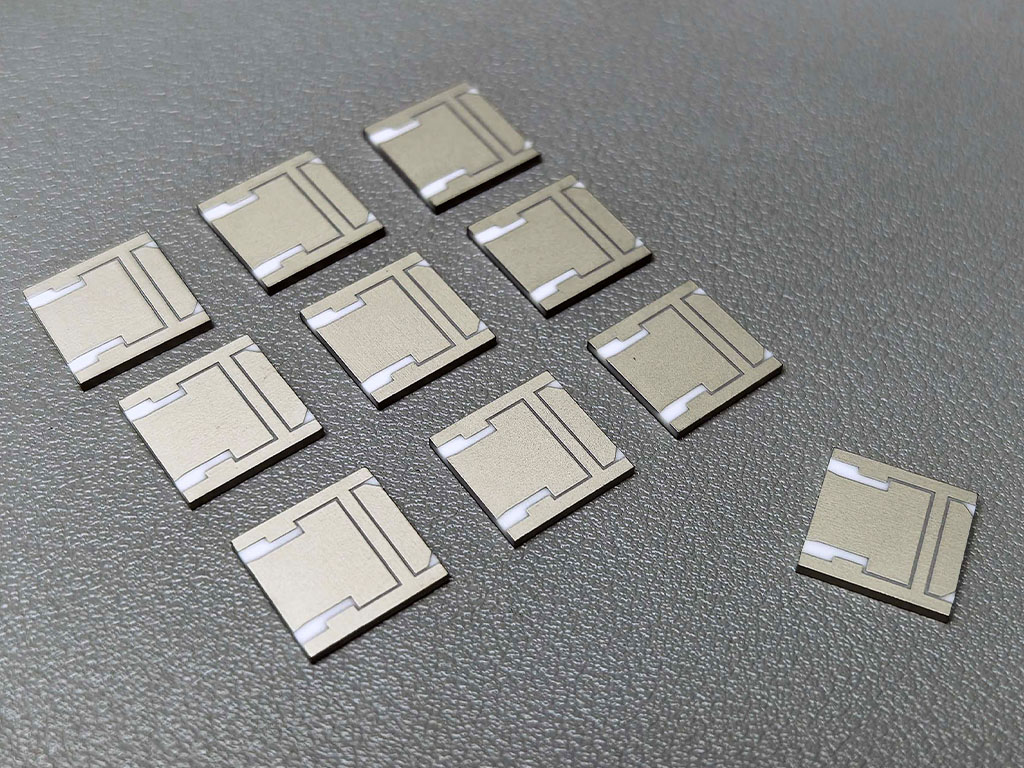
Toxicity Of Beryllium Oxide Ceramics
Although high-purity beryllium oxide ceramics are very safe, it cannot be ignored that beryllium oxide dust is toxic to the human body. This is like plastics that do not produce toxins when they are used, but the materials made of plastics are generally toxic for the same reason. Beryllium oxide ceramics processed into solid forms will not cause special harm to human health.
beryllium oxide Machining
Beryllium oxide ceramics, with their extremely high thermal conductivity and excellent electrical insulation, are an ideal material for power electronics and high-frequency devices. Great Ceramic boasts comprehensive beryllium oxide ceramic processing capabilities, providing customers with industry-leading performance, durability, and precision.
During processing, we utilize diamond grinding and precision polishing technologies to achieve micron-level tolerances, meeting the stringent structural accuracy and surface quality requirements of high-power modules, microwave devices, and laser systems. We also support metallization, brazing, and packaging processes, enabling customers to apply beryllium oxide ceramics to a wider range of industry applications.
Leveraging years of technical experience and advanced equipment, we not only provide standardized parts but also customize complex structural components and high-reliability products for our customers.

